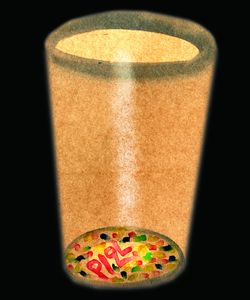What does “Piql” stand for? Some clues: It does not mean anything; it rhymes with pickle, and its goal is to preserve. But what it preserves and how it preserves it is a hi-tech tribute to human ingenuity. Says Piql Founder Rune Bjerkestrand: “We preserve world memory”.
That sounds incomprehensible and impossible to do. Where would one begin? Since 2017, Piql’s “Arctic World Archive” (AWA) is creating a digital repository for civilisational heritage. AWA is inspired by the Global Seed Vault in Svalbard, Norway’s Arctic Archipelago. This vault preserves seeds of the world to perpetuate humankind’s food supply, should they be destroyed by disease, drought or nuclear wars. These same calamities can wreck world culture. So, for a fee, Piql preserves text, images and audio-visuals of our cultural legacy: music, movies, mosaic, maps, manuscripts, monuments—imagine a 3D Taj Mahal preserved for eternity!
How do they do it? They do not curate. Clients approach them—usually governments, corporates, museums, libraries and national archives—to digitally preserve their assets and records for posterity. Many institutions have digitised their data, but not for long-term storage. Using AI and machine learning, Piql digitises and converts data into high definition QR codes and prints it to motion picture style film. Each 35mm frame has 8.8 million data points! Kick or crush it, the sturdy film survives. The data is open-sourced and read easily on different formats as an anti-obsolescence measure—to avoid the fate of disk operating system (DOS) and video home system (VHS). Who can predict the technology of 2030, let alone 1,000 years from now!
The spools of 35mm film (usually a kilometer long) are wound into special pizza-box like containers and shipped to clients. They are also stored in Svalbard, in a decommissioned coal mine, where the dry, dark, low-oxygen permafrost could preserve the film for thousands of years. Says Bjerkestrand: “This data cannot be hacked, because it is offline and permanent”. But some clients want to store the information in the cloud for easy access for the public. Cloud can be hacked, but a comparison with the original spool would immediately reveal the hackers’ digital fingerprints and the information corrected.
Unlike the government-run seed vault, the AWA is a private enterprise. Not surprising. Authorities have always dealt with seeds, but not so much with cutting-edge technology. Even the government-funded GPS and internet were popularised and commercialised by the private sector. Piql’s unique technology has been funded by €41 million from the European Union. The Norwegian government owns the Arctic coal mine where the archives are stored.
Piql is a nerdy solution to an enduring problem. It is a miracle that so much heritage has survived. But much has been lost: the Afghan Bamiyan statues or Brazil’s library that burned down, reducing its historic collections to ashes. The digital revolution has contributed to heritage loss, but it now comes to the rescue. Bjerkestrand says his idea is inspired by the Norwegian concept of “sjølberg” or self-sufficiency. Mountains are alluring but unpredictable. In their backpacks, trekking Norwegians carry items to survive all eventualities—waterproof warm wear, spikes, salves, folding cookstove and dry rations. Says Bjerkestrand: “I wanted to create a self-sufficient product.”
Institutions buy Piql’s sophisticated “reader” for high-resolution playback, but with a backpack containing a light source, mobile phone, camera and microscope, anyone can select and photograph a compressed QR code. Instructions on the film help you to recover the data. Visually, Piql represents 0 and 1, the binary code for all digitised data. Trust a Norwegian nerd to imagine, invent and implement such an idea.


